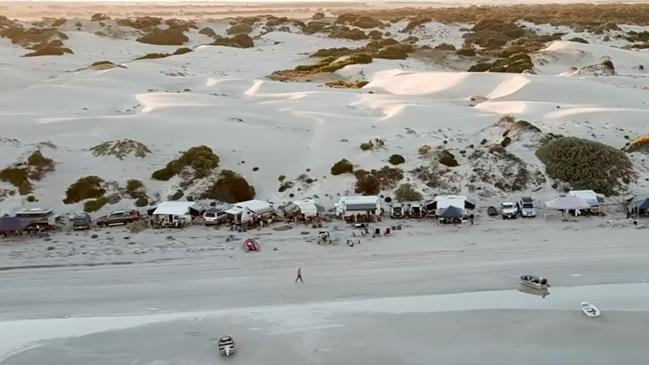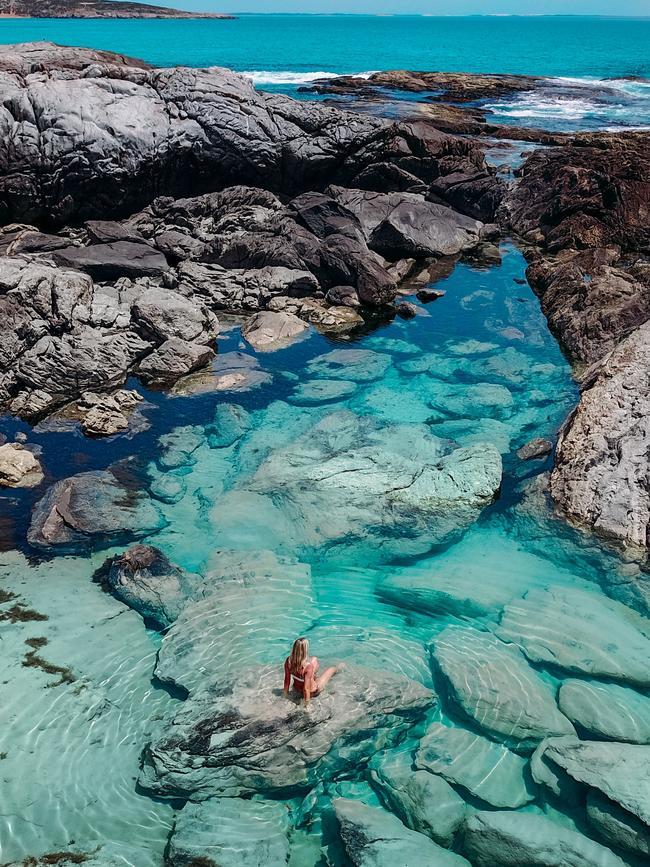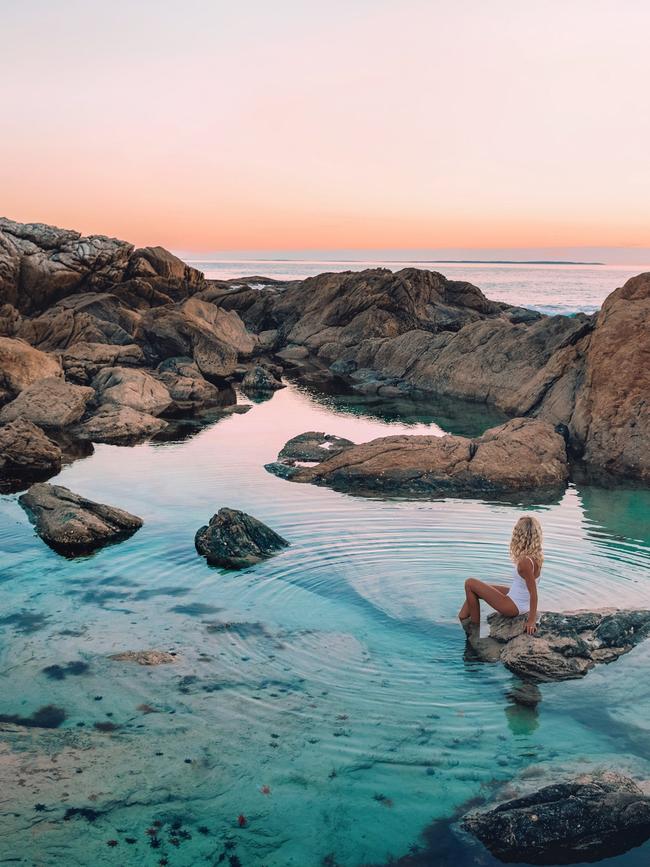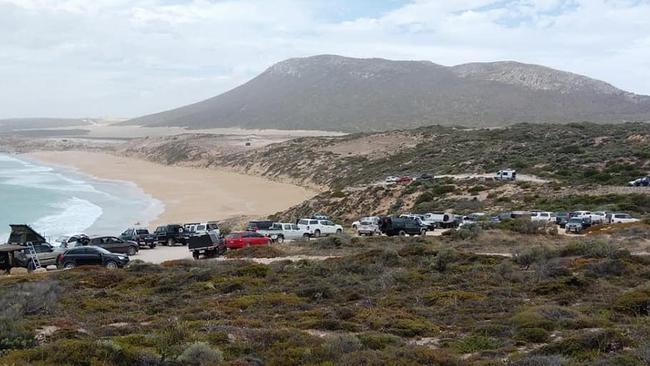The SA beaches we’re loving to death – and what’s being done to save them
A pandemic-led domestic tourism boom has put enormous pressure of some of SA’s most beautiful beaches. But now local communities are fighting back.
SA News
Don't miss out on the headlines from SA News. Followed categories will be added to My News.
They’re the beaches that are being loved to death, the West Coast slices of paradise that have come under enormous pressure thanks to a pandemic-led domestic tourism boom.
But locals and councils are pushing back, with new laws aimed at easing the pressure on our most popular coastal camping areas either already in place or in the pipeline.
At Perlubie Beach, an idyllic location about 15 kilometres up the road from the West Coast town of Streaky Bay, the number of campers over the past two summers has reached “tipping point”.
Anywhere between 80 and 100 campers and caravans can be found on the sand during the holiday period, leading to complaints from locals regarding faeces and toilet paper in the dunes, speeding vehicles on the beach, damage to bird habitat and holidaymakers monopolising sun shelters designed for day trippers.
The situation has led to the Streaky Bay District Council calling for a helping hand from the newly-appointed State Labor Government to help deal with the issues.

Currently most aspects surrounding the use of the beach fall under the auspices of different State Government departments, leading to the council calling for more power to enforce rules on Perlubie.
“While we’ve enjoyed the exposure Perlubie Beach is giving the region, the growing popularity of the destination as a camp site is placing significant pressure on the beach and we’ve reaching a tipping point in terms of sustainability,” Streaky Bay mayor Travis Barber said.
“Understanding that no one predicted the surge in popularity of the destination, this issue needs to be addressed now. This isn’t a situation where Council is saying, ‘not our problem’, this is a situation where Council is saying, ‘we have a solution, help us address the problem’, with the solution involving expediting the care and control of the beach to Council so we have the localised resources on the ground to effectively manage the destination. In terms of current use, Council is asking visitors to consider the beach and other users when coming to the region.”
It’s a sentiment backed by the Council’s CEO Damian Carter.
“We understand the attraction of Perlubie Beach as it’s a much-loved beach to our community as well,” Mr Carter said.
“However, you need to consider others and your overall footprint on the beach.”
Options being considered for Perlubie Beach include:
■ Introduction of a permit system for the beach to cap numbers at a sustainable level
■ Limiting camping on the beach to self-contained campers only
■ Introduction of speed limits on the beach
■ Stopping campers from occupying the day use shelters
■ Development of the carparking area
■ Limiting the area along the beach allocated to campers so habitats of shore birds and other wildlife can be maintained


Down the coast at Greenly, a stretch of surfing and fishing beaches west of Port Lincoln, new rules have already been introduced by the District Council of Lower Eyre Peninsula and, according to Mayor Jo-Anne Quigley, they’re working well.
The area attracted widespread media attention in the summer of 2020 when an unprecedented number of tourists camped on Greenly’s clifftops, with complaints of widespread human waste and destruction of native vegetation angering locals.
Since then the council has brought in an online booking system and a small fee for camping, with any money raised going back into improving facilities.
Mrs Quigley said that the system had been embraced by tourists and locals alike, with campers appreciating the fact that a spot can now be guaranteed through the booking process.
“At the height of Covid, when no one was travelling too much at all, everyone was encouraged just to stay within their own state,” Mrs Quigley said.
“And we also had the SATC put some information out about Coles Point, the rock pools and what a beautiful place it was. So everyone then thought, ‘Hey, why not? We can’t go anywhere to too far, so let’s go there.
“ So we had a crazy amount of camping and it was the lack of respect, I guess, that was the issue we had. Since then we’ve actually done a lot of work formalise those camping spots, which were pretty ad hoc, and make it very clear where you can and where you can’t camp.”

Mrs Quigley said more permanent toilets were also on the agenda to help deal with the issues of human waste and toilet paper in the dune areas.
And she said the work of students from the nearby Lake Wangary School, through its Minya Custodians program, had been invaluable in helping to rehabilitate the sensitive area.
“Last summer it was actually the locals that actually made us aware of what was going on,” Mrs Quigley said.
“And they were actually were really engaged with the clean-up. They were out there with their trailers helping council, which is a pretty cool thing to know that your residents and ratepayers within your area are so invested in their own backyard. It means a lot to them.”
Deputy Premier and environment minister Susan Close said: “The government is aware of the issue and the Department of Environment and Water has been working with the District Council of Streaky Bay. I will be meeting with representatives of the council next week.”





